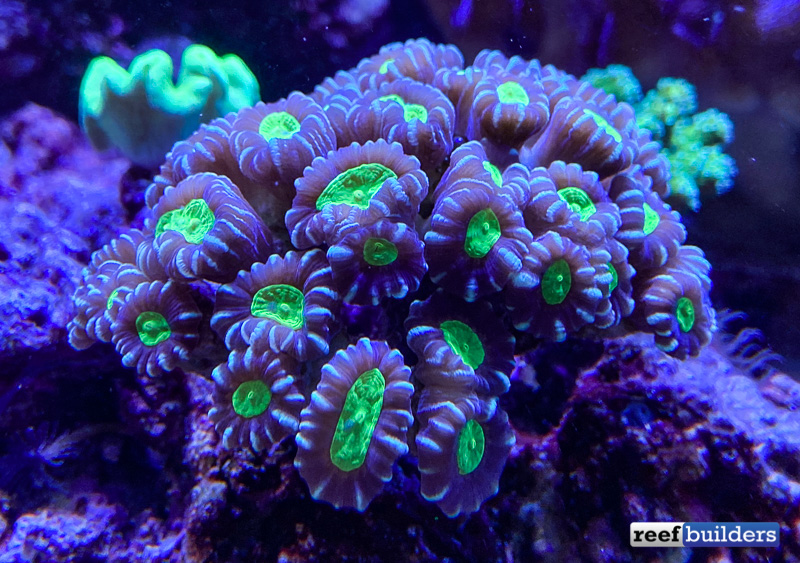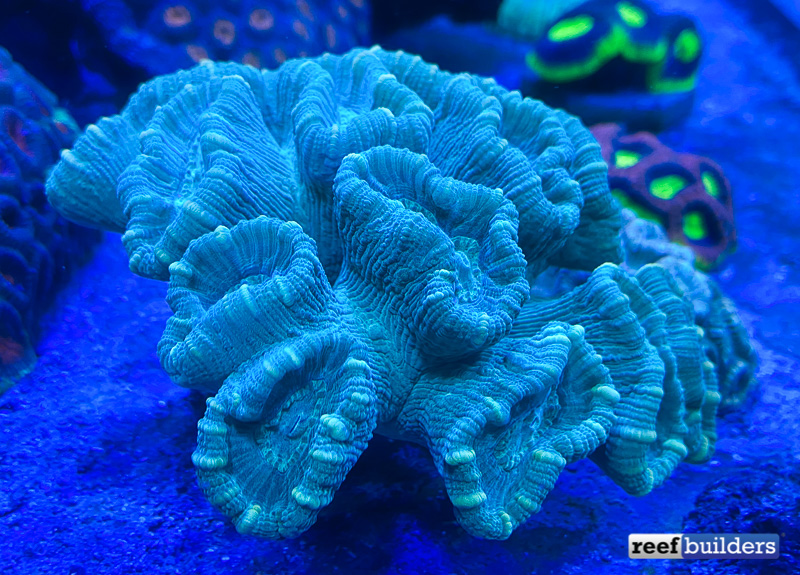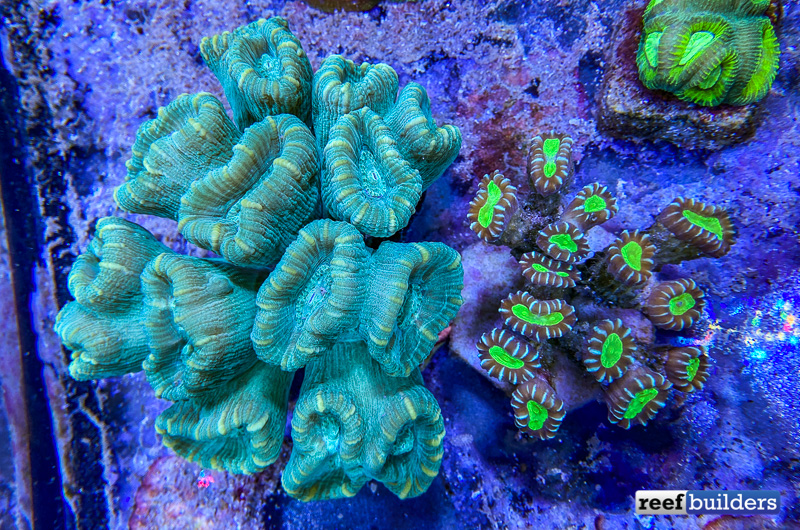Astraeosmilia is a new genus of stony coral that is about to change up our understanding of the candy or trumpet corals, formerly limited to the Caulastraea genus. This new group of stony corals pulls in three species from Caulastraea, one species of Dipsastrea (formerly Favia), but in the future could include several other ‘moon brain’ corals of the Dipsastrea that weren’t included in the genetic analysis performed by Arrigoni et. al.

Unfortunately the new designation of these previous species fractures the corals that the aquarium hobby typically calls candies and trumpet corals, but we might be able to safely say that the small, colorful neon and starmint candy corals with the smallest polyps are still in Caulastraea, including C. furcata and C. echinulata. These are the fastest growing strains which are popular in the reef aquarium hobby and while the larger polyp ‘trumpet’ corals of Astraeosmilia are infrequently imported into the aquarium world, these are not nearly as colorful and their large polyps grow much slowly than the delicate candy corals.

The last ten years have seen huge shakeups in the taxonomic placement of many familiar corals, not limited to Acanthophyllia, Australophyllia, M. lordhowensis, Isopora, some Cycloseris and now Astraeosmilia. These new taxonomic placements of stony coral might come across as semantics to beginner reef hobbyists more preoccupied with superficial, fanciful trade names but there is a lot of knowledge to be learned from the actual species names of our corals.

We have long admired the real physical and visual differences between our small polyp Caulastraea coral strains and a much more robust, large polyp colony of trumpet coral that we can now safely attribute to Astraeosmilia. Our care of the various coral strains from these two genera won’t really change but we’ll be much more mindful of placing them next to each other in the future just in case there is any kind of aggression between them such as we see between Lord corals and true Acanthastrea species.



